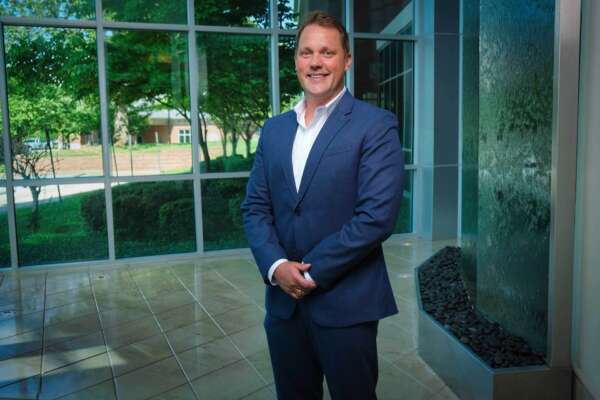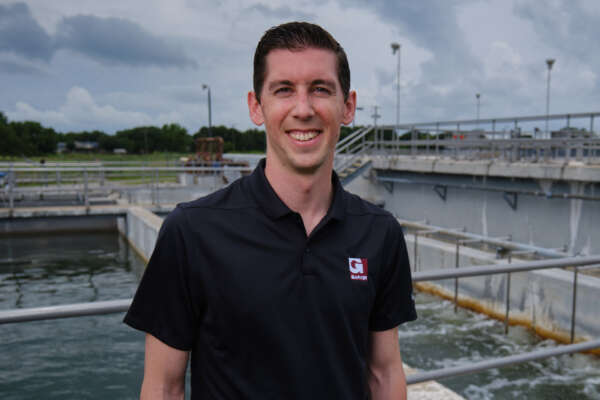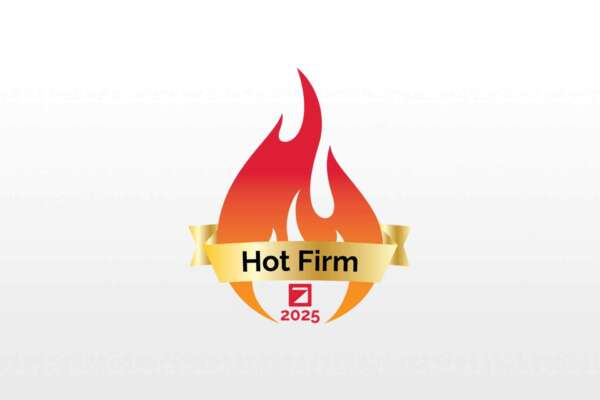Garver helped the City of Enid select GAC post filter adsorbers to address blended water stability and prepare for PFAS regulations
As the City planned its first surface WTP, Garver provided evaluations and assessments to guide its selection of advanced technologies such as GAC for distribution system integrity, compliance with current regulations, and preparation for PFAS challenges.
Project Highlights
- As the City’s first surface water treatment plant, the new WTP must meet current taste and odor goals to obtain public acceptance.
The new WTP is a long-term investment and should position the City to meet future water quality goals, like removing PFAS should they be detected in the water supply.
The City initially selected post-filtration GAC contactors to remove taste and odor compounds and natural organic matter to prevent formation of regulated disinfection byproducts. With operational changes, Garver’s GAC contactor design could also remove PFAS.
The City of Enid, Oklahoma (the City), identified a need to supplement their groundwater supply due to a growing population. So, they set out to implement a brand-new surface water supply system.
Garver has been collaborating with the City since the very start of this project, identifying their options, evaluating alternatives, and getting them started on the road to design and construction. Garver is also serving as owner’s representative (OR), program manager, and lead designer for a multi-phased program to deliver raw water from the Kaw Lake Reservoir to the City. The program provides the City with a new, 50-year sustainable water supply.
The program is designed to initially provide advanced treatment for 10.5 MGD and has provisions to treat up to 21 MGD at full build-out. New infrastructure to convey water from Kaw Lake Reservoir to Enid includes an intake structure, 70 miles of 30/36-inch pipeline with a booster pump station, two 10-MG terminal storage reservoirs, and the new WTP. The WTP has flexibility to optimize the blend ratio of the treated surface water with Enid’s existing groundwater supply.
The City tasked Garver with evaluating six different treatment plant configurations, representing the use of alternative technologies, which were eventually pared down to four feasible alternatives for full consideration:
- Alternative 1 – Conventional WTP with ozone and granular activated carbon (GAC)
- Alternative 2 – Lime softening with ozone
- Alternative 3 – Microfiltration-nanofiltration
- Alternative 4 – Conventional WTP with nanofiltration
Costs were estimated based on preliminary unit process sizes and conceptual layouts for the facilities associated with each alternative. Garver also performed life-cycle cost analyses and conducted a non-monetary evaluation that included water quality, environmental impacts, sustainability, and operability. Each criterion was given a weighted score proportional to its importance, as developed in cooperation with City staff.
Garver also completed a detailed assessment of current and upcoming regulatory development for various drinking water contaminants and consulted with the City to determine the regulatory drivers, as well as customer acceptance of finished water from this new plant along with considerations for the integrity of the existing distribution system infrastructure.
Ultimately, the City chose Alternative 1, which includes pre-oxidation with ozone to address periodic taste and odor issues in the Kaw Lake Reservoir water, conventional coagulation-flocculation-sedimentation, intermediate ozonation for disinfection and oxidation of trace organics, biological filtration, and post-filtration granular activated carbon (GAC) contactors for additional organics removal, including removal of trace organic contaminants.
Taking a holistic approach to water treatment
Garver took a holistic approach to treatment, making sure the process train was robust even when faced with per- and polyfluoroalkyl substances (PFAS). Garver made sure there was stability within the water system by looking at the chemical and biological quality of the water.
If the existing groundwater and the new treated surface water are incompatible, a situation could occur where deposits in pipeline from the groundwater could break loose as the surface water blend moves through, creating a red water and other corrosion problems observed in other utilities.
"It’s very important we design a robust treatment process with the goal of keeping the end in focus."
Zaid Chowdhury, PhD, PE, BCEE
Drinking Water Practice Leader
“It’s very important we design a robust treatment process with the goal of keeping the end in focus. We want to have a process that keeps treated water safe and won’t change its characteristics as it travels through the system,” said Garver Drinking Water Practice Leader Zaid Chowdhury, PhD, PE, BCEE, who provided technical leadership for water quality evaluations, process selection, and conceptual design for the project. Chowdhury also provided QC reviews during the detailed design phase.
Achieving blended water stability with GAC
GAC was originally chosen to provide sufficient organics removal to maintain free chlorine in the distribution system. Garver recommended the City continue using free chlorine in their distribution system as chloramines could create new challenges. With free chlorine, the City would have to make sure organic content remained low in the water and disinfection byproducts (DBPs) didn’t violate regulatory requirements.
“The City investigated the challenges of blended water quality during the preliminary design phase of the Kaw Lake Water Supply Program."
Murali Katta, PE
City of Enid Director of Engineering
“The City investigated the challenges of blended water quality during the preliminary design phase of the Kaw Lake Water Supply Program. This item was extensively discussed, and all options were explored to meet the desired quality. PFAS was one of the elements that played an important factor in the decision-making process. Our engineering team provided the pros and cons of different treatment technologies and guided the City to a path to success," said City of Enid Director of Engineering Murali Katta, PE.
Getting ahead of PFAS regulations with GAC
While PFAS wasn’t the City’s original focus when they decided on GAC, it has become a consideration due to upcoming regulations. “We have to conduct testing to determine if PFAS is present in their system or source water, but with the GAC already being part of the design, the City will have an effective method of PFAS removal in place at the WTP,” said Chowdhury.
GAC adsorption in a post-filter contactor arrangement, which is what the City selected, has already been identified as a best available technology for PFAS removal by the USEPA. In Enid, post-filter GAC contactors have a 15-minute empty bed contact time, which is sufficient for PFAS removal. The City would only need to alter GAC changeout frequency to further address PFAS, should it be found in their water. This prevents the City from needing to make treatment design improvements when PFAS regulations are finalized.
Training staff to become familiar with new treatment technologies and a new treatment plant
“We’re also helping the City’s staff with startup and commissioning to train staff on the new treatment technologies and full treatment plant. This way they’ll be comfortable with their new plant and can easily and safely perform their daily operations,” said Garver Implementation Team Leader Kyle Kruger, PE, who has overseen the program’s construction.
Incorporating flexibility for future improvements
The flexibility Garver incorporated into design along the way will allow the City to accommodate future improvements, whether that includes altering the GAC changeout frequency or additional innovative technologies (e.g., on-site reactivation of GAC using microwave energy) to address the PFAS challenge. No matter the improvement needed, Garver has built a relationship with the City as a trusted advisor and assured the City that Garver is ready to support them even after the program is completed.









Share this article